Craniofacial disorders arise in early pregnancy and are one of the most common congenital defects. To fully understand how craniofacial disorders arise, it is essential to characterize gene expression during the patterning of the craniofacial region. To address this, we performed bulk and single-cell RNA-seq on human craniofacial tissue from 4-8 weeks post conception. Comparisons to dozens of other human tissues revealed 239 genes most strongly expressed during craniofacial development. Craniofacial-biased developmental enhancers were enriched +/- 400 kb surrounding these craniofacial-biased genes. Gene co-expression analysis revealed that regulatory hubs are enriched for known disease causing genes and are resistant to mutation in the normal healthy population. Combining transcriptomic and epigenomic data we identified 539 genes likely to contribute to craniofacial disorders. While most have not been previously implicated in craniofacial disorders, we demonstrate this set of genes has increased levels of de novo mutations in orofacial clefting patients warranting further study.
El centro de recursos de datos Kids First (“RDC”) comprende instituciones asociadas respaldadas por el Fondo Común de los NIH con el número de premio U2CHL138346 como parte del Programa de Investigación Pediátrica Gabriella Miller Kids First del Fondo Común (“Los niños primero”). Todo el contenido, términos y condiciones y políticas asociadas con el portal y el sitio web de DRC (los servicios") son producidos por la RDC. Los puntos de vista y opiniones de los autores expresados en los Servicios no necesariamente expresan ni reflejan los de los Institutos Nacionales de Salud. ("NIH") o los EE.UU.. gobierno. Además, Los NIH no respaldan ni promocionan ninguna entidad de la República Democrática del Congo ni ninguno de sus productos o servicios, ni garantizan los productos., servicios, o información proporcionada por la DRC.
© 2024 Gabriella Miller Centro de recursos de datos Kids First. Reservados todos los derechos.
- Acerca de
- Acerca de
- Los niños primeroUn esfuerzo colaborativo de investigación pediátrica, Kids First busca impulsar la comprensión de las causas genéticas y los vínculos entre el cáncer infantil y los defectos congénitos estructurales.
- ComunidadUna coalición solidaria de fundaciones comunitarias y organizaciones sin fines de lucro de salud infantil respalda el éxito continuo del Centro de recursos de datos Kids First..
- Preguntas frecuentesDescubra respuestas a preguntas comunes sobre los datos, herramientas, y recursos que puede aplicar para potenciar la investigación sobre el cáncer infantil y las enfermedades raras.
- Acerca de los niños primeroEl centro de recursos de datos Kids First permite a los investigadores, médicos, y pacientes trabajarán juntos para acelerar la investigación y promover nuevos descubrimientos para niños afectados por cáncer y trastornos congénitos..
- Acerca de
- Recursos
- Portal
- DatosAcceda a una amplia colección de datos clínicos y genómicos de calidad armonizados por el Kids First Data Resource Center.
- HerramientasLas herramientas basadas en la nube ayudan a los investigadores en la exploración, descubrimiento, análisis, y estudio para una comprensión más profunda del cáncer infantil y las enfermedades raras.
- PublicacionesLea acerca de los enormes avances logrados gracias a valiosas contribuciones de investigación basadas en datos de Kids First..
- EstudiosPotencia tu investigación a través de Kids First Data. Descubra la sólida colección de cáncer infantil, desorden congenito, y datos de condiciones cruzadas disponibles ahora.
- Centro de ayudaComience su investigación o avance con la ayuda del Centro de recursos de datos Kids First.
- Iniciar sesiónRegístrese o inicie sesión en el Portal Kids First.
- RecursosEstos conjuntos de datos están armonizados con canales de código abierto de mejores prácticas desarrollados por el equipo del Kids First Data Resource Center basándose en una profunda experiencia con datos pediátricos y comentarios de la comunidad..
- Portal
- Noticias
- Idioma
- INICIAR SESIÓN PORTAL






